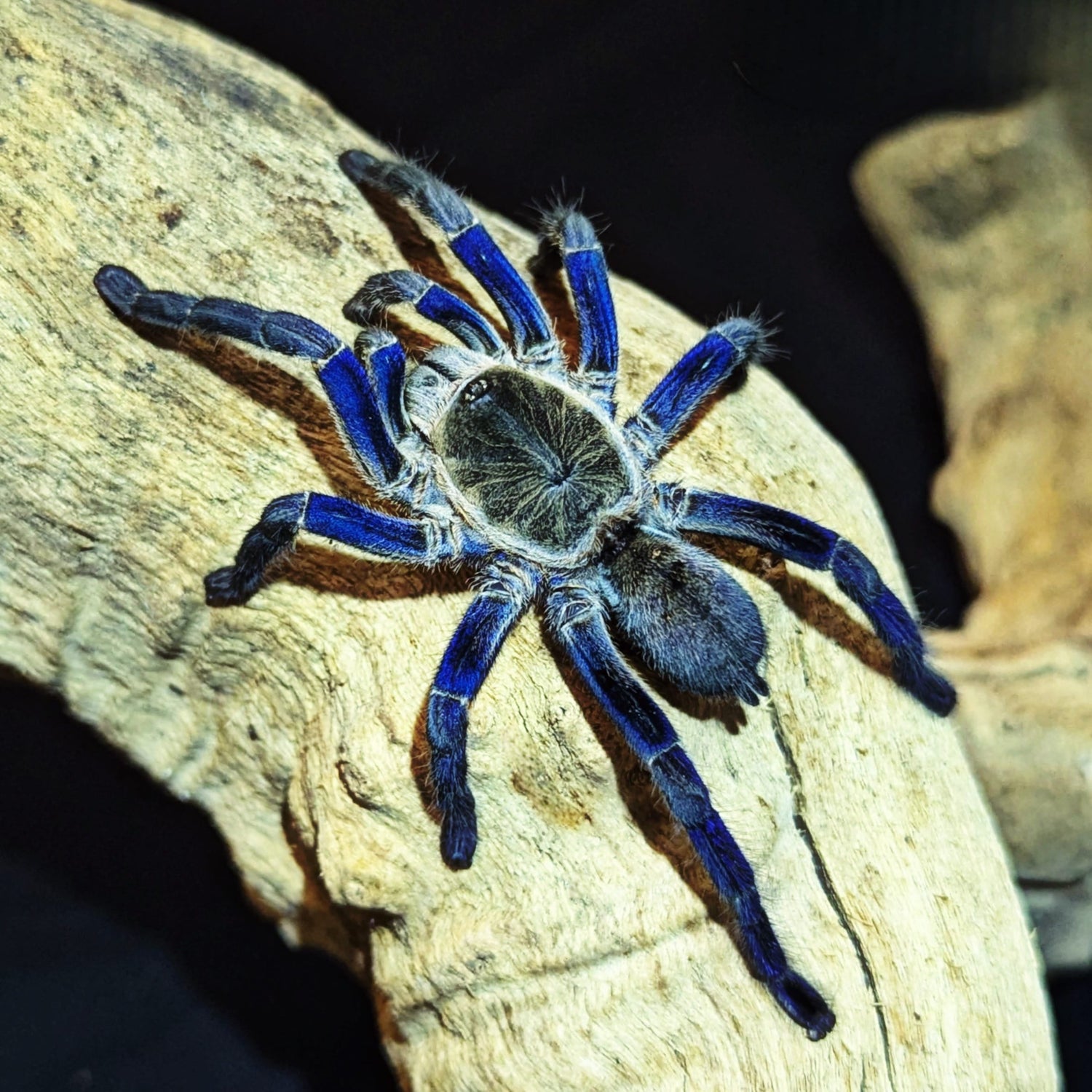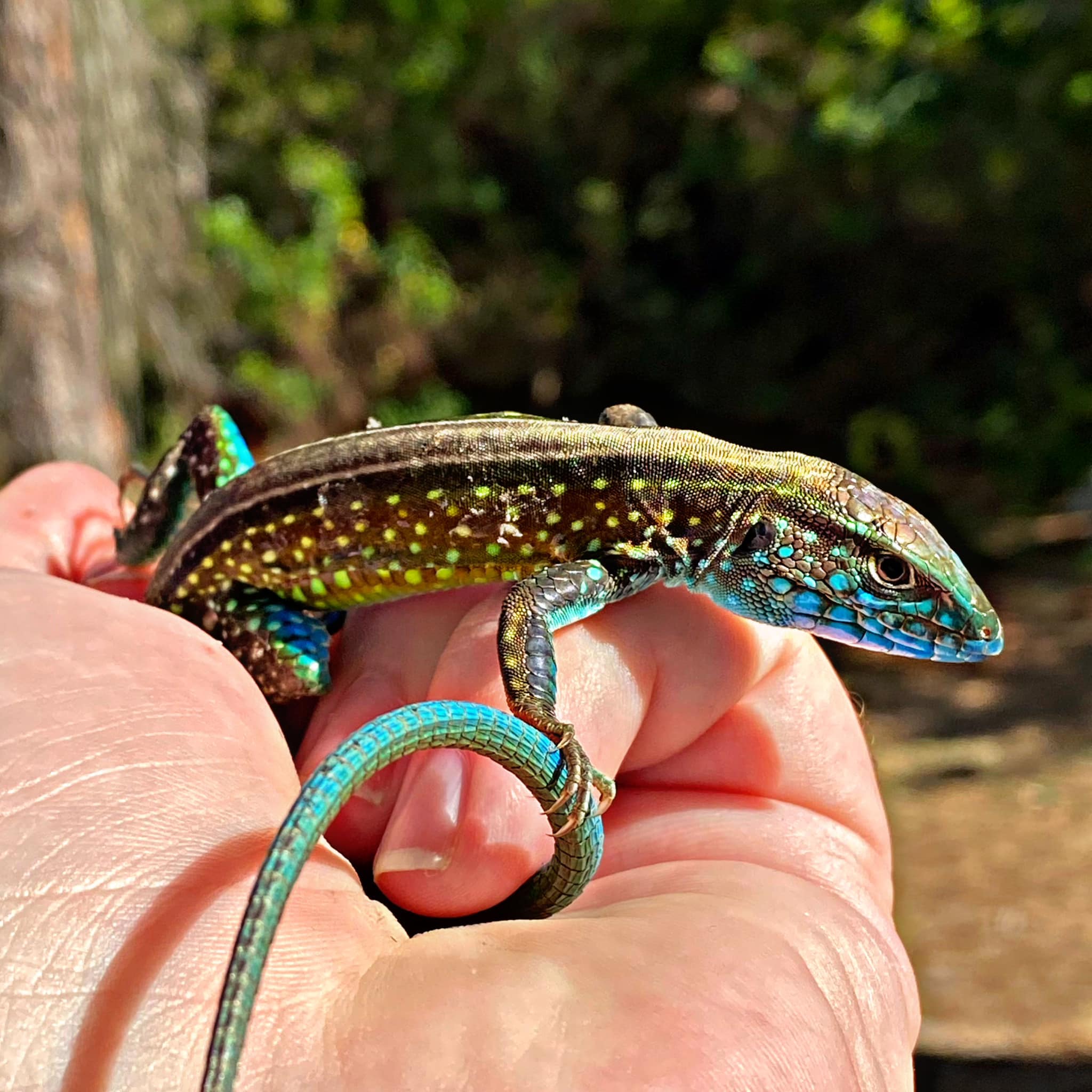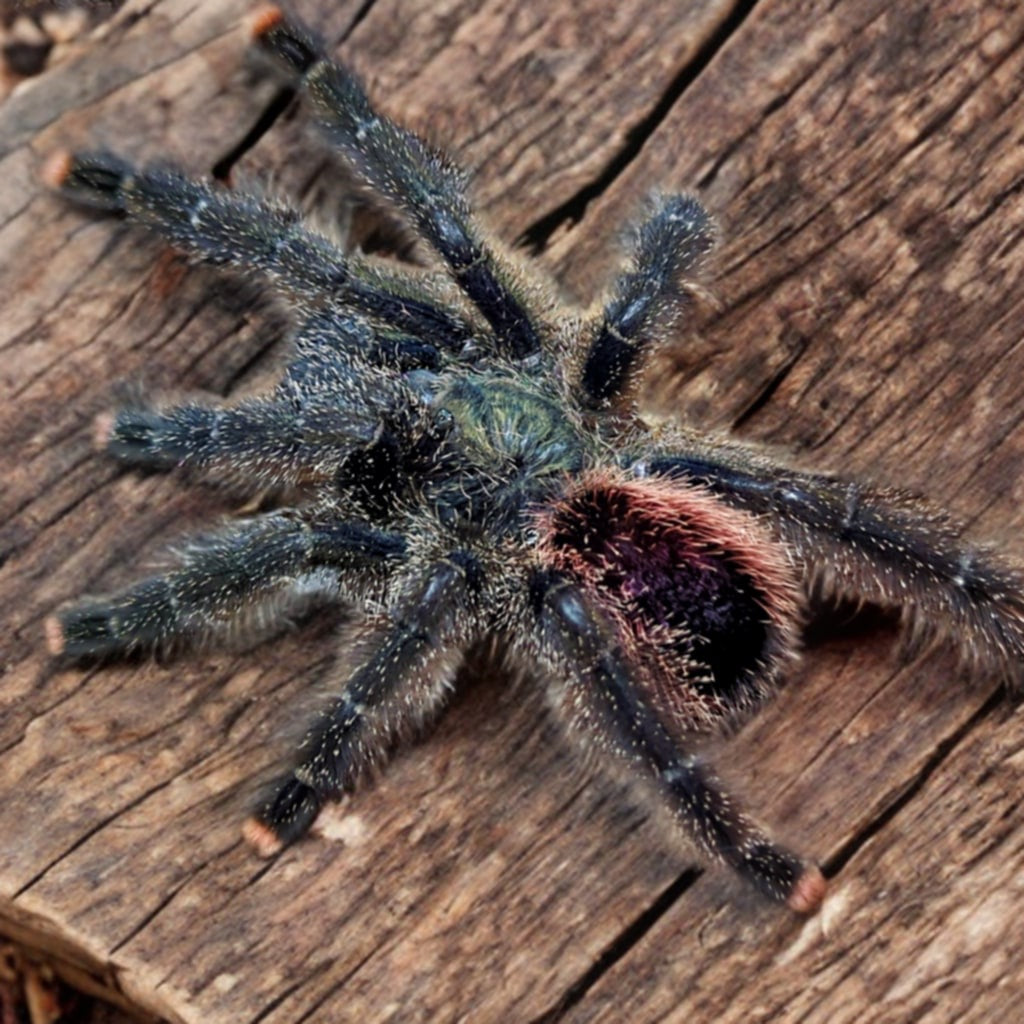Introduction
The Cobalt Blue Tarantula, Cyriopagopus lividum, is a visually striking species known for its iridescent blue legs and secretive nature. Native to the tropical forests of Southeast Asia, this fossorial tarantula is best suited for experienced keepers due to its defensive temperament and specific habitat needs.
Habitat Setup
This species requires a deep, secure enclosure that supports its natural burrowing behavior. A 10-gallon tank or similar-sized enclosure with at least 6 inches of substrate is ideal. Use coconut fiber, peat moss, or a soil mix to retain moisture while allowing for digging. Maintain temperatures between 75-82°F and humidity between 75-85%. Mist lightly to preserve humidity, but ensure good airflow to prevent mold. Include a starter burrow or cork bark hide, though the tarantula will likely dig its own retreat underground. A shallow water dish should be provided and kept clean.
Diet
Feed a varied diet of live insects such as crickets, roaches, and mealworms. Juveniles should be fed every 3-4 days, and adults once or twice a week. Remove any uneaten prey within 24 hours to avoid stress or injury.
Shedding Care
Before molting, Cyriopagopus lividum may refuse food and remain hidden. Maintain slightly elevated humidity during this period. Do not disturb the tarantula and wait at least a week after molting before offering food to allow the exoskeleton to harden.
Handling and Temperament
This species is extremely defensive and not suitable for handling. It may strike or retreat rapidly when threatened. Limit interaction to maintenance and observation only. Always use tools or soft brushes when working in the enclosure.
Health and Maintenance
Spot-clean regularly and ensure no leftover prey remains underground. Full substrate replacement is recommended every 6 to 12 months. Consistent humidity, clean water, and proper ventilation are essential to prevent illness or stress.
Conclusion
Cyriopagopus lividum is a stunning but high-maintenance tarantula, ideal for display rather than interaction. With the right environment and careful care, it can thrive and showcase its dazzling blue coloration from the safety of its subterranean home.




Leave a comment
This site is protected by hCaptcha and the hCaptcha Privacy Policy and Terms of Service apply.